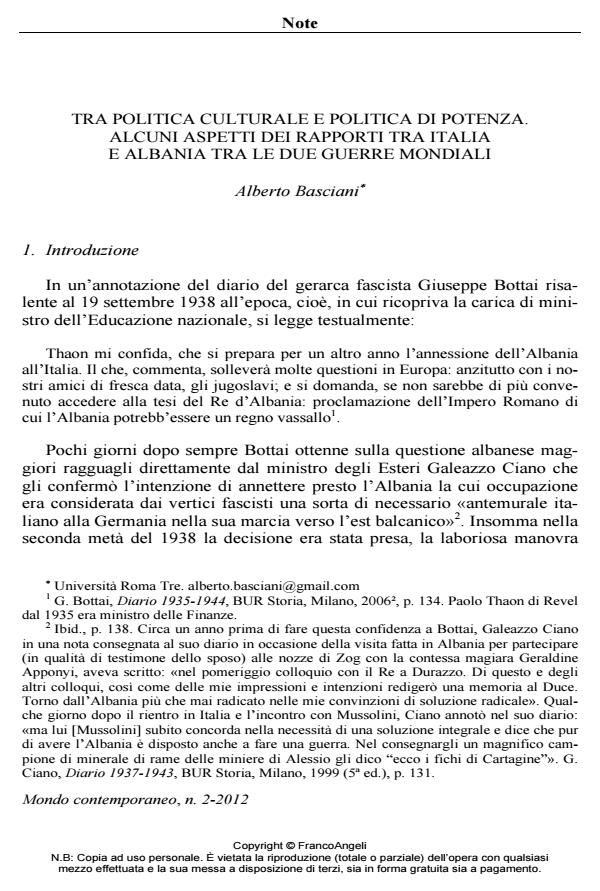Between cultural policy and power politics. Some aspects of the Italian-Albanian relationship between the two world wars
Journal title MONDO CONTEMPORANEO
Author/s Alberto Basciani
Publishing Year 2012 Issue 2012/2
Language Italian Pages 23 P. 91-113 File size 434 KB
DOI 10.3280/MON2012-002004
DOI is like a bar code for intellectual property: to have more infomation
click here
Below, you can see the article first page
If you want to buy this article in PDF format, you can do it, following the instructions to buy download credits

FrancoAngeli is member of Publishers International Linking Association, Inc (PILA), a not-for-profit association which run the CrossRef service enabling links to and from online scholarly content.
During the Twenties and Thirties, Fascist foreign policy turned Albania into one of the most important goals of the political, economic and cultural expansion of Italy in South-Eastern Europe. Through the analysis of unpublished documentary material coming from the archives of the Ministry of Foreign Affairs of Rome and from the National Archives of Rome, the paper analyzes some of the main directions of Italian foreign policy and the Italian cultural policy toward the Adriatic country. Despite the attempts of king Zog to maintain margins of autonomy, since the mid-Thirties the Italian pressure didn’t do anything else other than to increase: the means that the fascist regime used for increasing his own influence and his interference in the Albanian internal affairs were conspicuous financial loans, military helps, increase in the number of the Italian schools, imposition of compulsory Italian language classes, the massive recourse to corruption that didn’t spare the Albanian sovereign and its entourage. The openly declared aim by count Ciano was that to achieve the annexation of the neighboring country whenever the international situation had made it possible.
Keywords: Albania, Balkans, Fascist’s foreign policy, international relations, Fascist propaganda, aggression
- The early botanical exploration of Albania (1839 – 1945) Hans Walter Lack, Zoltán Barina, in Willdenowia /2020
DOI: 10.3372/wi.50.50304 - Current Challenges in Architecture and Urbanism in Albania Federica Pompejano, Elena Macchioni, pp.137 (ISBN:978-3-030-81918-7)
Alberto Basciani, Tra politica culturale e politica di potenza. Alcuni aspetti dei rapporti tra Italia e Albania tra le due guerre mondiali in "MONDO CONTEMPORANEO" 2/2012, pp 91-113, DOI: 10.3280/MON2012-002004